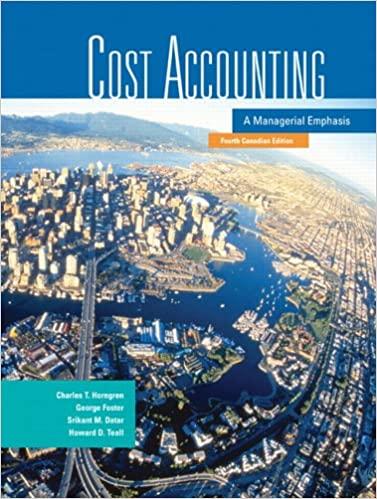Multinational transfer pricing and taxation. (Richard Lambert, adapted) Anita Corporation, headquartered in Canada, manufactures state-of-the-art milling machines.
Question:
Multinational transfer pricing and taxation. (Richard Lambert, adapted) Anita Corporation, headquartered in Canada, manufactures state-of-the-art milling machines. It has two marketing subsidiaries, one in Brazil and one in Switzerland, that sell its products.
Anita is building one new machine, at a cost of $600,000. There is no market for the equipment in Canada. The equipment can be sold in Brazil for $1,200,000, but the Brazilian subsidiary would incur transportation and modification costs of $240,000. Alternatively, the equipment can be sold in Switzerland for $1,140,000, but the Swiss subsidiary would incur transportation and modification costs of $300,000. The Canadian company can sell the equipment to either its Brazilian subsidiary or its $wiss subsidiary but not to both. The Anita Corporation and its subsidiaries operate in a very decentralized manner. Managers in each company have considerable autonomy, with each manager interested in maximizing company income.
Required 1. From the viewpoint of Anita and its subsidiaries taken together, should the Anita Corporation manufacture the equipment? If it does, where should it sell the equipment to maximize total operating income? What would the operating income for Anita and its sub¬
sidiaries be from the sale? Ignore any income tax effects.
What range oftransfer prices will result in achieving the actions determined to be optimal in requirement 1 ? Explain your answer.
The effective income tax rates for this transaction are as follows: 40% in Canada, 60% in Brazil, and 15% in $witzerland. The tax authorities in the three countries are uncertain about the cost of the intermediate product and will allow any transfer price between $600,000 and
$840,000. IfAnita and its subsidiaries want to maximize after-tax operating income,
(a) should the equipment be manufactured and
(b) where and at what price should it be transferred?
Now suppose managers act autonomously to maximize their own company’s after-tax operating income. The tax authorities will allow transfer prices only between $600,000 and $840,000. Which subsidiary will get the product and at what price? Is your answer the same as your answer in requirement 3? Explain why or why not.
Step by Step Answer:

Cost Accounting A Managerial Emphasis
ISBN: 9780131971905
4th Canadian Edition
Authors: Charles T. Horngren, George Foster, Srikant M. Datar, Howard D. Teall





